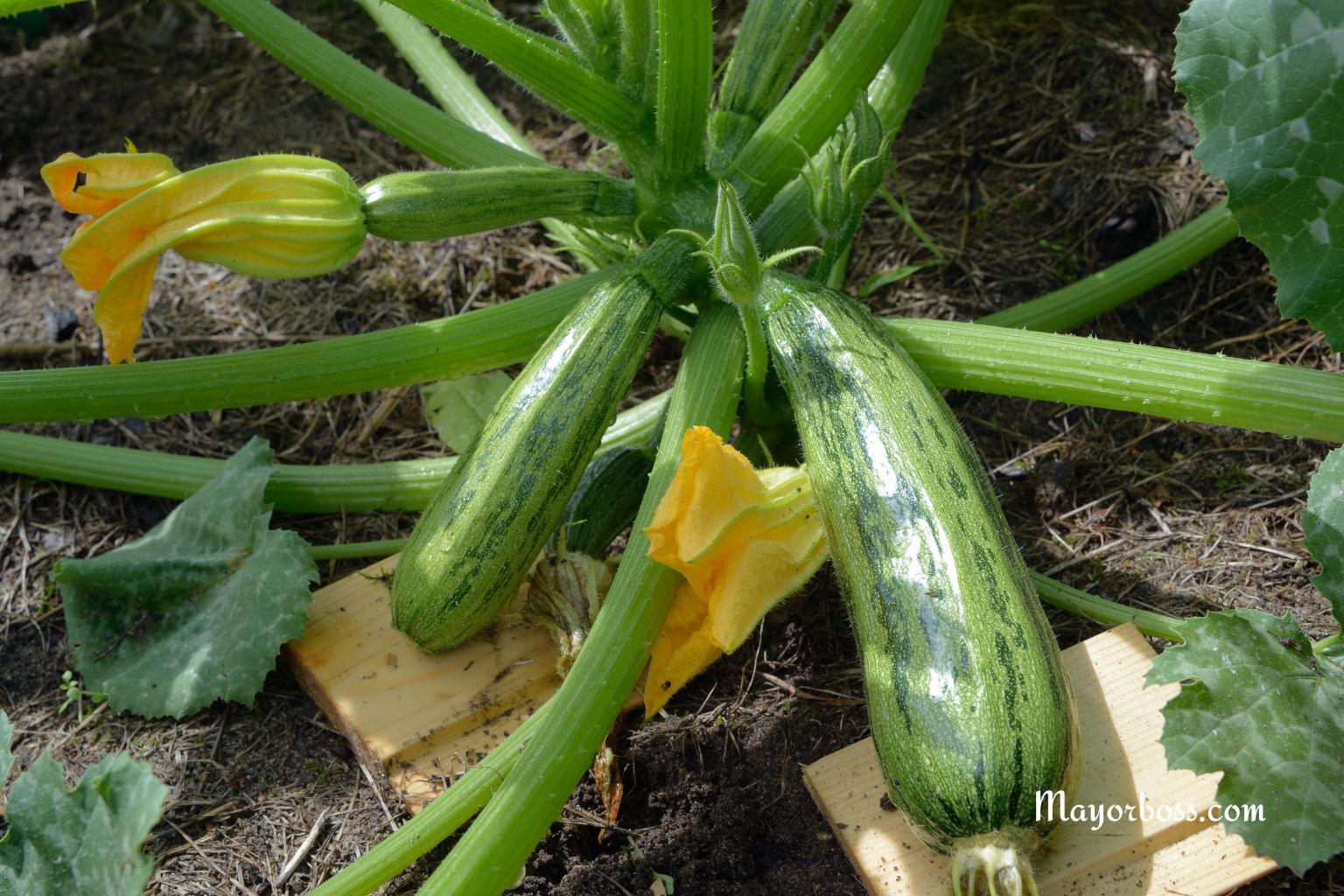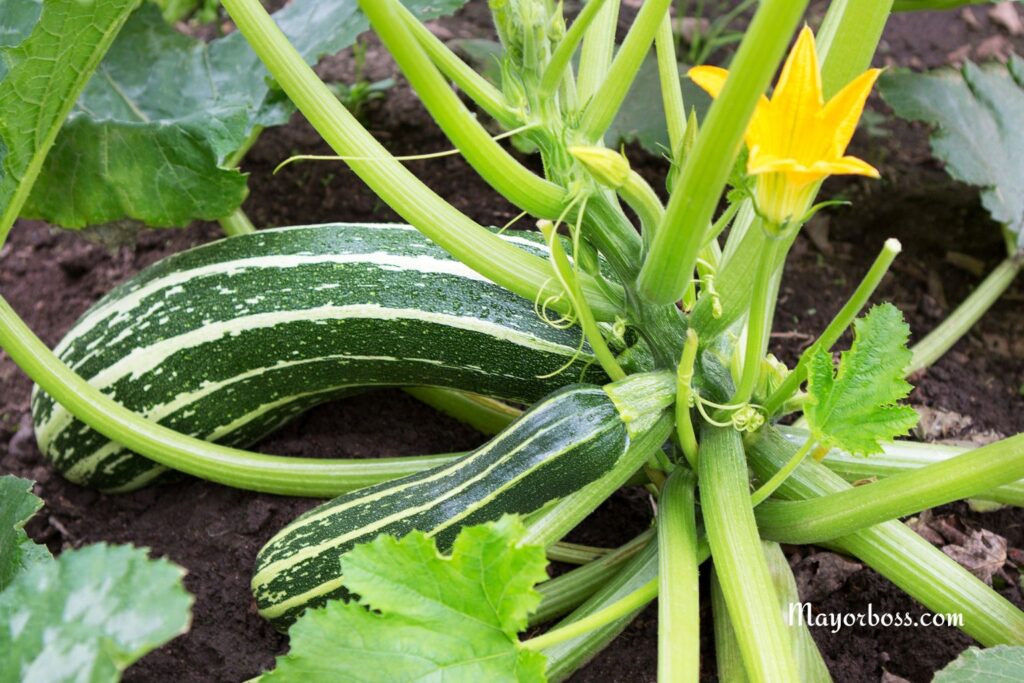How to Grow Zucchini: Planting, Care & Harvest Tips
Zucchini is one of the easiest vegetables to grow at home. To grow zucchini, plant seeds in rich, well-drained soil after the last frost. Provide full sunlight, regular watering, and space for vines to spread. Harvest zucchini when they are 6–8 inches long for the best flavor.

Zucchini is a popular summer squash that thrives in home gardens. Its fast growth, high yield, and mild flavor make it a favorite for many gardeners. If you have ever wondered how to grow zucchini successfully, you are not alone. Many people want to enjoy fresh, homegrown vegetables, and zucchini is a great place to start.
When to Plant Zucchini
Zucchini grows best in warm weather.1 Wait until all danger of frost has passed and the soil has warmed up to at least 60°F (16°C). In most regions, this means planting in late spring or early summer.
If you plant too early, the seeds may rot, or the plants may struggle to grow. Patience is key. Warm soil will help the seeds sprout quickly and give your plants a strong start.
Choosing a Location
Zucchini needs full sunlight—at least six hours a day. Select a spot in your garden that gets plenty of direct light. Zucchini plants also need room to spread, so pick an open area.
The soil should drain well. If water stands on the ground after it rains, choose a higher spot or use raised beds.
Preparing the Soil
Zucchini grows best in rich, fertile soil. Before planting, mix compost or well-rotted manure into the soil. This improves both drainage and nutrient content.
Aim for soil with a pH between 6.0 and 7.5. If your soil is heavy clay or sandy, add organic matter to help it hold water and nutrients.
Planting Zucchini
You can start zucchini from seeds or young plants (seedlings).
For seeds:
- Make small mounds of soil about 2 feet apart.
- Plant two or three seeds in each mound, about 1 inch deep.
- After seedlings sprout, thin to the strongest one or two plants per mound.
For seedlings:
- Gently transplant them into the garden after the soil warms.
- Space them 2 to 3 feet apart, as they will grow wide.
Water the area well after planting.
Caring for Zucchini Plants
Watering
Zucchini likes steady moisture. Water deeply once or twice a week, depending on rainfall. Avoid wetting the leaves—water at the base of the plant to help prevent disease.
During hot, dry spells, you may need to water more often. Consistent moisture helps the plant produce tender, flavorful squash.
Mulching
Apply mulch around the base of your plants. Mulch helps keep soil moist and reduces weeds. Use straw, grass clippings, or chopped leaves. Avoid piling mulch against the stems to prevent rot.
Feeding
Zucchini is a heavy feeder. Use a balanced fertilizer or side-dress with compost every few weeks. This provides the nutrients needed for strong growth and high yields.
Supporting the Plants
Most zucchini varieties sprawl across the ground. You can let them grow naturally, or train them up a small trellis to save space and improve air circulation.
Pest and Disease Control
Zucchini can attract pests such as squash bugs, cucumber beetles, and aphids. Check your plants regularly. Hand-pick bugs, or use insecticidal soap if needed.
Watch for powdery mildew—a white, powdery fungus on leaves. To prevent this, space plants well and avoid wetting leaves when watering.
When and How to Harvest Zucchini

Zucchini grows quickly. Harvest when fruits are about 6 to 8 inches long—smaller fruits are more tender and have better flavor.
Use a sharp knife or garden shears to cut the stem cleanly. Harvest often, as regular picking encourages the plant to produce more squash.
If you let zucchini grow too large, they become tough and seedy. Check your plants every day or two during peak season.
Common Problems and Solutions
- Plants not producing fruit: Zucchini flowers may not get pollinated. Attract bees with flowers nearby, or gently hand-pollinate by transferring pollen from male to female flowers.
- Fruit rotting on the end: This could be blossom end rot, usually from uneven watering or low calcium. Keep soil moisture steady and consider adding lime if your soil lacks calcium.
- Yellow leaves: Overwatering or disease. Let the soil dry slightly between waterings and remove any diseased leaves.
Storing and Using Zucchini
Fresh zucchini can be kept in the refrigerator for up to a week. Do not wash before storing; instead, wash right before using.
Zucchini is delicious grilled, sautéed, baked, or added to soups and salads. If you have too much, try freezing grated zucchini for baking later.
Frequently Asked Questions
1. Can zucchini be grown in containers?
Yes, choose a large pot (at least 5 gallons) with good drainage. Use quality potting soil and give the plant plenty of sunlight and water.
2. How long does it take zucchini to grow?
Zucchini is ready to harvest about 45 to 55 days after planting seeds.
3. Do zucchini plants need to be pollinated?
Yes, zucchini needs pollination to produce fruit. Bees and other insects help with this. You can also hand-pollinate if needed.
4. How many zucchini plants should I grow?
One or two plants usually provide plenty for a family, as zucchini is very productive.
5. What should I do if my zucchini leaves turn white?
This is often a sign of powdery mildew. Improve air flow, avoid overhead watering, and remove affected leaves if needed. Use fungicidal sprays if the problem persists.






